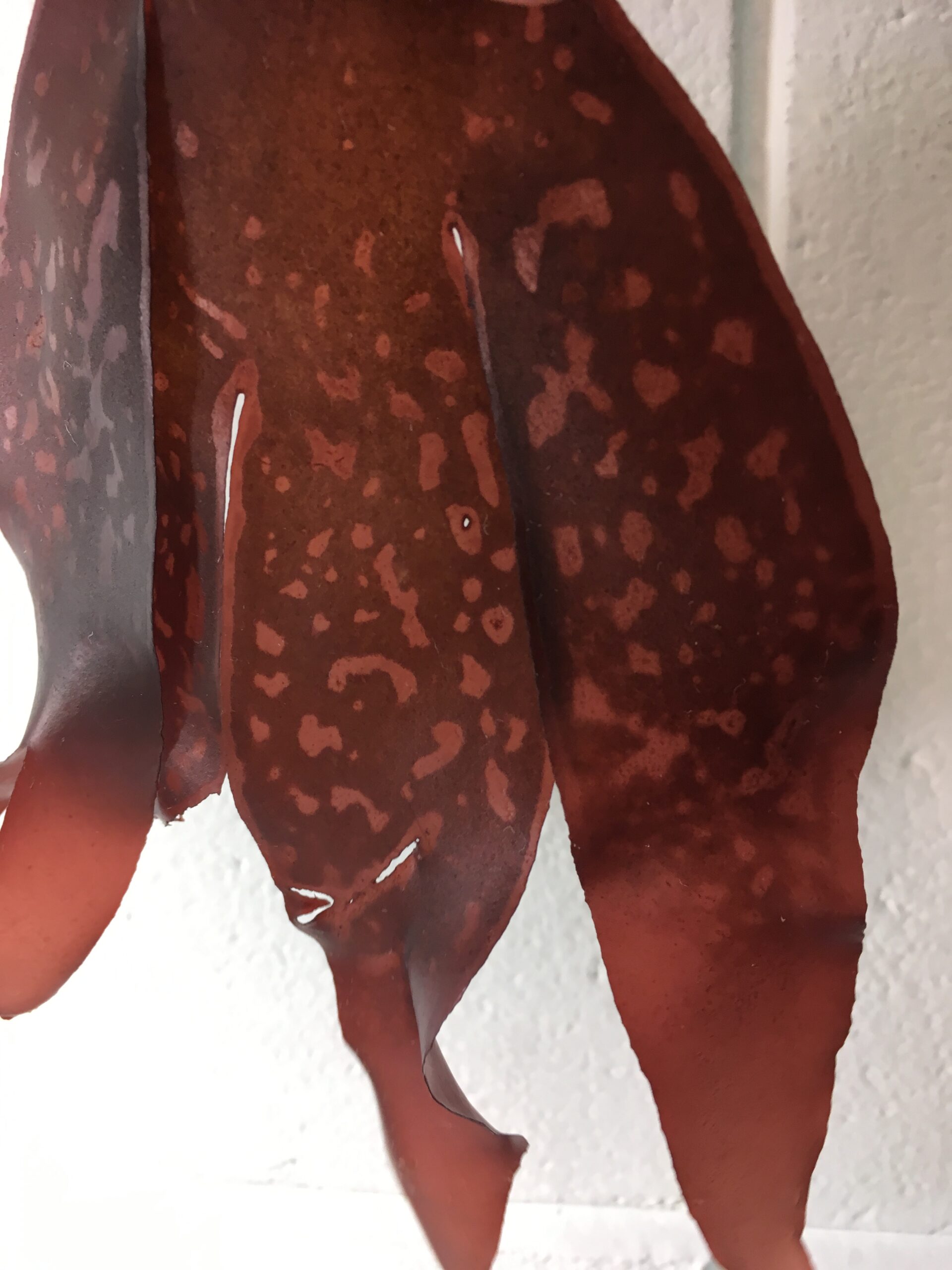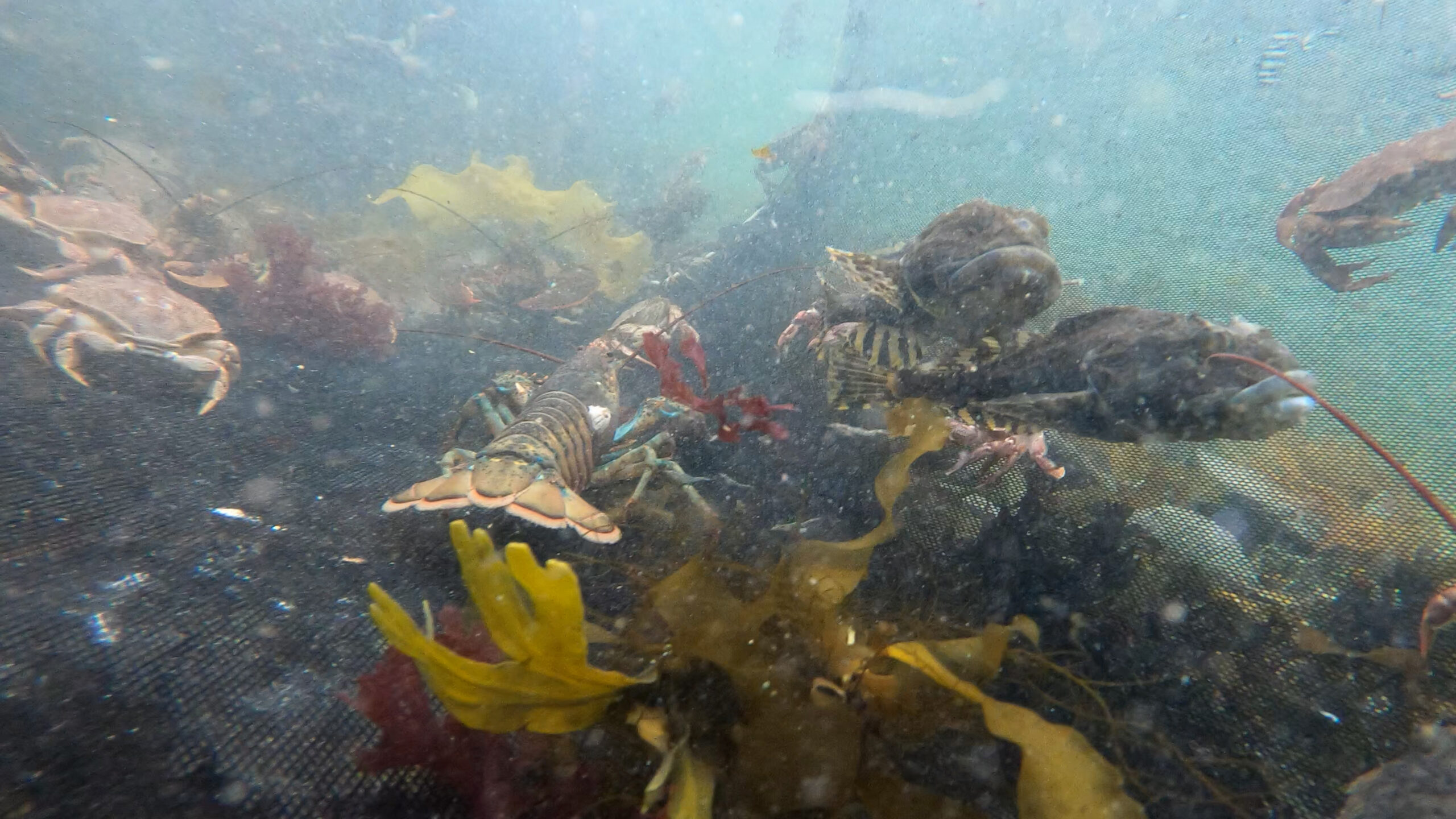
SIZE:
15 to 20 cm, up to 40 cm.
LIFE EXPECTANCY:
Unknown.
LIFE CYCLE:
Dulse reproduces sexually.
It releases spores in winter, which leads to fertilization. The embryo produced by fertilization becomes a new holdfast from which a new alga grows.
Dulse grows from its extremities, which are then the youngest parts of the algae.
If some of the alga’s fronds are damaged or too old, new growth can appear on the frond’s edges.
It is conceivable that dulse might regenerate from its holdfast, but this hypothesis has yet to be proven.

The leaves of the dulse change somewhat as the alga becomes fertile.
Credit: Éric Tamigneaux
Its blade is widened at the base, then divides into elongated lobes like the fingers of a hand, hence its name in French (Main de mer palmée). It has a short foot that ends in a discoid holdfast.
A young dulse has a more translucent frond than a mature one, which is dark red or purple. Older fronds are thick, almost black, with a leathery consistency.
Coastal zone, below the low tide mark.
Dulse prefers environments exposed to strong currents.
PREYS:
CO2
Solar energy
PREDATORS:
Herbivorous molluscs
Grazing fish
MACHINES:
Hand harvesting.
Tests for dulse farming at sea are underway, notably by ÉPAQ students and teachers, in collaboration with the MWIFMA.
REGULATIONS:
Harvesting requires a permit and must be done by cutting the seaweed above the holdfast, not by tearing it off.
To date, a growing demand exceeds what harvesting in Québec is able to supply. Therefor dried dulse is often imported to meet this demand.
Dulse is a Smarter seafood-listed species.
BENEFITS:
Dulse is very rich in protein and fibre. It contains iron, magnesium, calcium and iodine. It may also be beneficial for diabetes.
LET’S COOK:
Crunchy texture when fresh, more tender once cooked. Rich, peppery flavour with a hint of hazelnut.
Mainly used dried, in flakes, to season salads, sandwiches and cheese.
OUR CULINARY ADVICE:
- Keep this dried alga away from light. Like wine, its taste will develop with age. It becomes more complex, more pleasant.
- Do as Maritimers do and eat dulse like potato chips.
The waters of the St. Lawrence are known for their good quality. However, as algae absorb the elements present in the water to grow, it is preferable to ensure that the harvesting site is clean before eating this species fresh.
Québec dashi
Traditionally, dashi broth is made from Japanese kombu and flakes of smoked, dried and fermented bonito. In a collaborative project, Merinov, Laval University and ÉPAQ set out to develop a Québecois version.
By comparing colour, aroma, flavour, mouthfeel and glutamate content, project participants elected the winning local combination: a dashi made of dulse and lobster co-products that release more glutamate and umami flavour.






